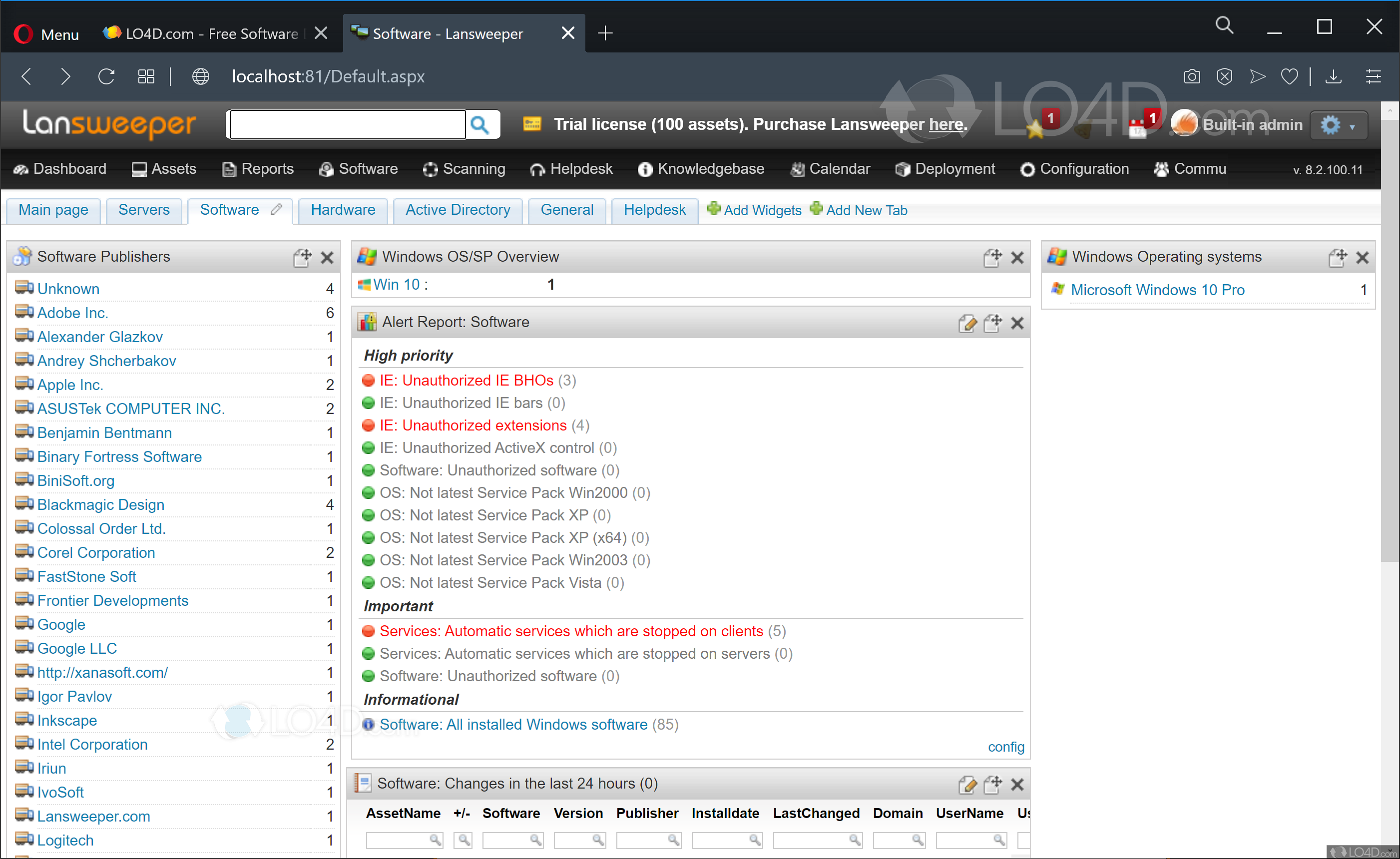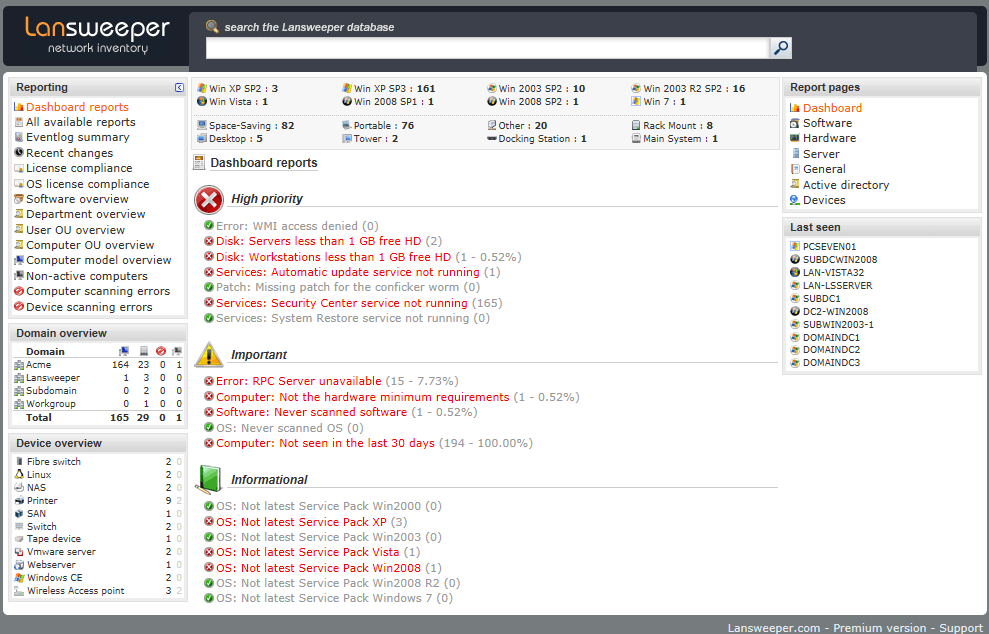

Microsoft accounts like can be used as credentials as wellĪll credentials are securely stored in the Lansweeper database.If you use a domain credential, submit a down-level login name like NetBIOS domain name\username or a user principal name (UPN) like For local credentials, use the format.If you have a credential that meets the previously listed requirements, you can enter it in one of the following formats: They will be automatically tried by most scanning targets. The global credentials are your default credentials. Head over to Scanning > Scanning Credentials using the top menu.Ĭlick the edit button on the Global Windows credential.

If you plan on scanning via Active Directory, the credential must also have read-only access to Active Directory.The credential must have administrative privileges on the target machine.For Windows, credentials must meet the following requirements: To gather detailed information from devices and services, credentials are a requirement. The next step in getting more data is providing credentials. If you're more of a hands-on person, you can do the changes manually by configuring the firewall using the Windows interface, you can find all the steps to do this in the Configuring Windows Firewall knowledgebase article. Netsh advfirewall firewall add rule name="TCP Port 135" dir=in action=allow protocol=TCP localport=315 Option 3: Manually netsh advfirewall firewall set rule group="Remote Administration" new enable=yes They may generate deprecation warnings on newer operating systems but are functional there as well. These commands will run successfully on both older and newer operating systems. Run the commands below in an elevated Command Prompt on the client machine. The second option is to use two command prompt commands to perform the needed changes. You can open the script in a text editor to review its contents, before executing in Command Prompt.ĭownload (right-click and Save Link As) and run this script in an elevated Command Prompt on the client machine. This ensures that DCOM, Windows Firewall, and other settings are correct. The first and easiest option is to run the following script on your Windows devices.


 0 kommentar(er)
0 kommentar(er)
